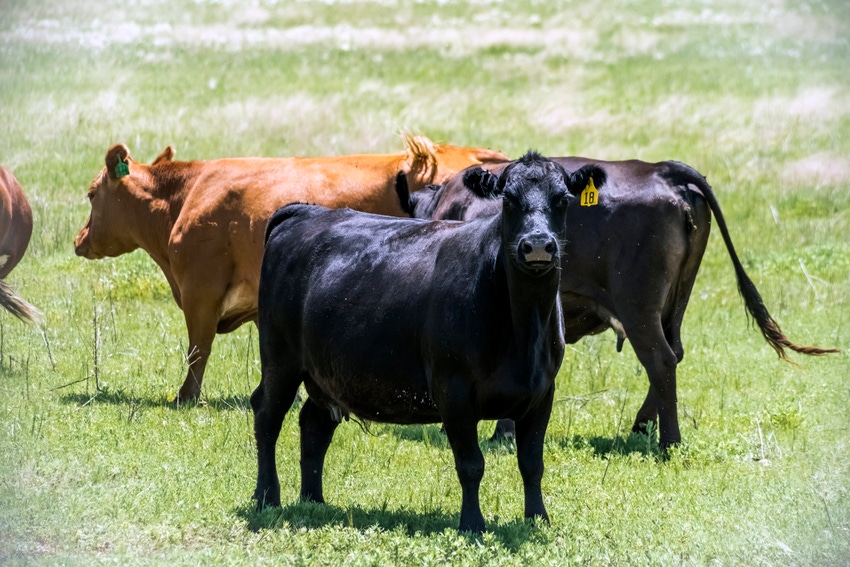Speakers at Neogen International Genomics Symposium outline emerging technologies that will speed beef improvement.
June 22, 2018

At the recent 2018 Beef Improvement Federation (BIF) annual conference, beef industry leaders got a glimpse of the future of genetic improvement in cattle and more opportunities on the horizon, according to an announcement from Neogen.
The company held its Neogen International Genomics Symposium at the BIF conference, where several speakers outlined emerging technologies that will speed beef improvement.
Recombinetics executive vice president Dr. Mitch Abrahamsen outlined his company’s approach to gene editing in agricultural and human medicine applications.
“For livestock, our initial focus is on animal welfare and health,” Abrahamsen said. Recombinetics uses gene editing to express traits that naturally occur in a species, which, in effect, delivers breed improvements more efficiently. Traditional breeding efforts to reach the same goals may take years or even decades and may, through inbreeding, reduce genetic diversity.
The firm is focusing on costly, endemic health and welfare issues. For example, some breeds of cattle do not grow horns (polled), while other breeds do. “Traditional breeding for the polled trait is inefficient and comes at a high productivity cost. Precision breeding with gene editing can do this faster, all while retaining genetic diversity,” he said.
Recombinetics recently announced that it is working with Semex to introduce hornless genes into commercial dairy cattle. The work will reduce injury to animals caused by horns and will eliminate dehorning.
“The precision breeding technique makes small adjustments to an animal’s genome. In this case, we make use of the natural repair function to replace the horned gene with a naturally occurring polled gene. This provides a direct and lifelong impact on animals’ well-being and health,” Abrahamsen said.
Gene editing processes like TALEN and CRISPR-Cas 9 promise to quickly and precisely make these kinds of improvements. The techniques also are bringing an end to surgical castration of male piglets. Recombinetics and its commercial partners DNA Swine Genetics and Hendrix Genetics are working to bring the castration-free trait to market as a new tool in the pork industry, he said.
The technology also holds promise to reduce porcine respiratory and reproduction syndrome and other threats to animal health. Enhanced swine genetics would enable pigs to stay healthy and prosper when exposed to a virus and pass that trait on to future litters.
Similar effects that improve disease immunity in cattle would reduce losses as well as cut costs of treatment with antibiotics or other products, he said.
Gene editing will be useful in agricultural applications to help sustainably feed a hungry, growing world while bringing new benefits to human medical research on challenging health problems like cancer or inherited diseases, Abrahamsen said.
Matt Barten, founder and chief executive officer of Embruon, addressed how genotyping of cattle embryos will speed seedstock herd improvement. His company uses DNA screening of cattle embryos from donor cows to help producers plan selection and breeding decisions before embryos are transferred to recipient cows.
Barten said the technology is derived from human reproductive medicine and added that his company recently opened an in vitro fertilization clinic to go with its genetic screening of embryos.
Barten presented an economic analysis, compiled by a Kansas State University specialist, that showed that a moderate-sized cattle breeding operation could easily cut tens of thousands of dollars from expenses by prescreening embryos. The savings come mainly from using a smaller herd of recipient cows to achieve a producer's production goals. Embruon helps assess genetic merit before cattle are born.
Barten said the return-on-investment analysis addresses cost savings but does not get into the higher prices earned by selling groups of offspring with higher genetic merit.
“It stands to reason that when you are making decisions about which embryos to implant, you will choose to invest in developing those of higher genetic merit,” he said. “Those bulls or females will be worth more at sale and thus can improve profit potential.”
Dr. JR Tait, director of genetic product development at Neogen, outlined how the company’s commercial beef DNA profiles help producers speed herd improvement. He described how Igenity gene markers work in crossbred and straightbred cattle with Angus, Red Angus, Simmental, Hereford, Limousin and Gelbvieh backgrounds. The product is uniquely designed to work in mixed-breed cattle.
“This allows producers to use genomics to choose their best commercial heifers out of their high-genetic potential bulls for crossbreeding programs that take advantage of heterosis. These practices work together well to speed herd improvement,” he said.
Rounding out the conference was Neogen vice president of genomics Dr. Stewart Bauck, who noted that BIF "is 50 years old this year” and that BIF unites academic, breed leaders and cattle producers to empower change.
Igenity was introduced to the beef market at the 2003 BIF conference and is now 15 years old, he said, adding that GeneSeek began operations as a university-related start-up in 1998 and is celebrating its 20th anniversary.
“Who would have known 50 years ago that we could, for about $30, assay the blueprint of life on a practical scale for any cattle producer? Who would have guessed that we’d read the DNA of unborn bulls and pick the very best ones to raise? Now, we look at ideas like gene editing, which give us precise, safe and natural tools to rapidly solve long-standing challenges to animal health,” he said.
You May Also Like



